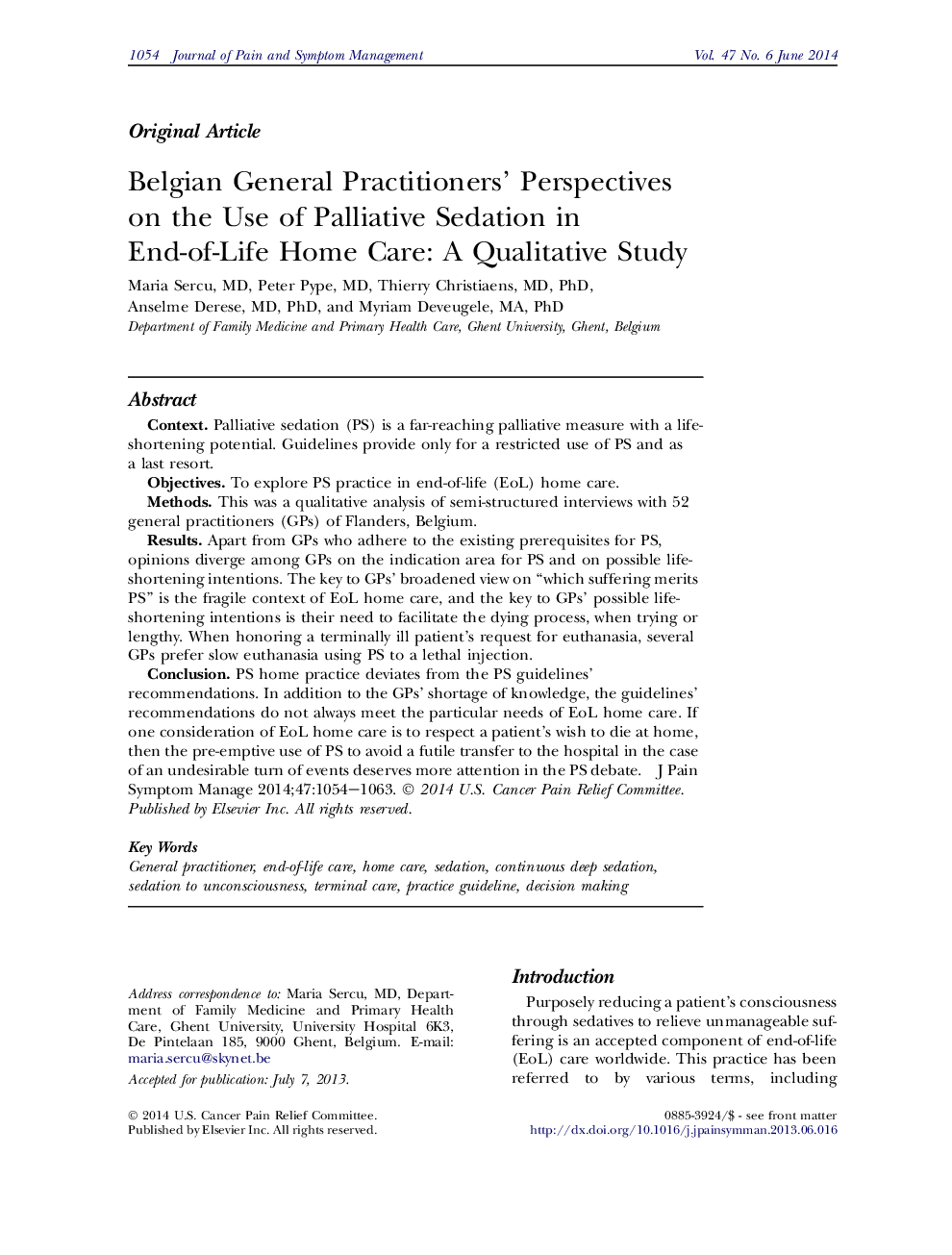| Article ID | Journal | Published Year | Pages | File Type |
|---|---|---|---|---|
| 2733968 | Journal of Pain and Symptom Management | 2014 | 10 Pages |
ContextPalliative sedation (PS) is a far-reaching palliative measure with a life-shortening potential. Guidelines provide only for a restricted use of PS and as a last resort.ObjectivesTo explore PS practice in end-of-life (EoL) home care.MethodsThis was a qualitative analysis of semi-structured interviews with 52 general practitioners (GPs) of Flanders, Belgium.ResultsApart from GPs who adhere to the existing prerequisites for PS, opinions diverge among GPs on the indication area for PS and on possible life-shortening intentions. The key to GPs' broadened view on “which suffering merits PS” is the fragile context of EoL home care, and the key to GPs' possible life-shortening intentions is their need to facilitate the dying process, when trying or lengthy. When honoring a terminally ill patient's request for euthanasia, several GPs prefer slow euthanasia using PS to a lethal injection.ConclusionPS home practice deviates from the PS guidelines' recommendations. In addition to the GPs' shortage of knowledge, the guidelines' recommendations do not always meet the particular needs of EoL home care. If one consideration of EoL home care is to respect a patient's wish to die at home, then the pre-emptive use of PS to avoid a futile transfer to the hospital in the case of an undesirable turn of events deserves more attention in the PS debate.
